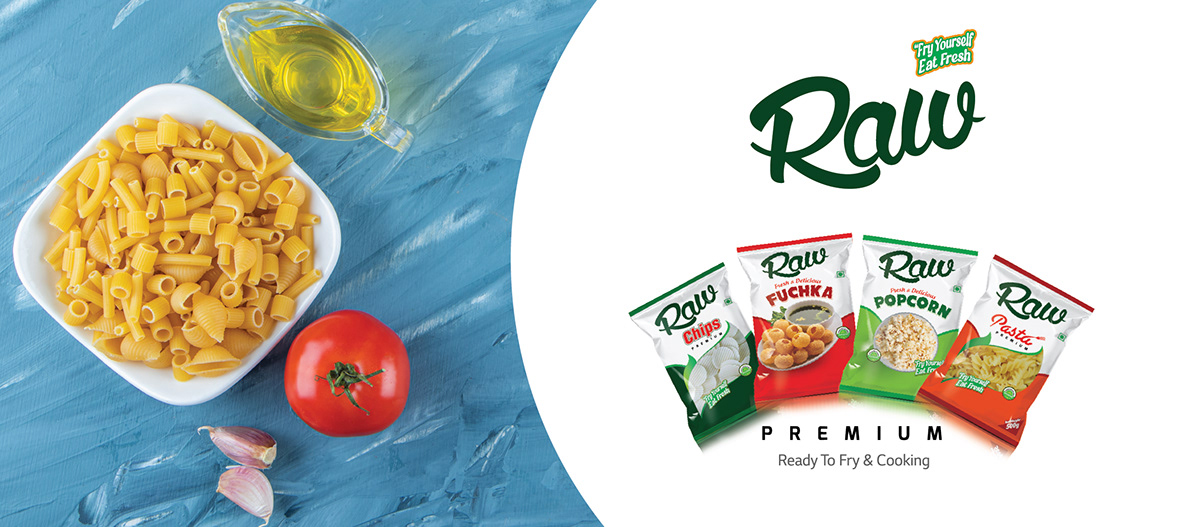


Pasta products contain milled wheat, water, and occasionally eggs and/or optional ingredients. Pasta manufacturers typically use milled durum wheat (semolina, durum granulars, and durum flour) in pasta production, although farina and flour from common wheat are occasionally used.

Raw Pasta Packet Design
-
Client:
Deshi Food & Beverage Limited
Company Web:
Company Web:
www.deshifoodbd.com
-
Design Produced:
M Kalim
-
Art Director:
M A Salam
-
Designer:
M Kalim
-
Photographer:
Razzak
Pasta Background
Pasta is a universally enjoyed food, and almost every country serves a type of noodle. In China, it is mein; Japan, udon; Poland, pierogi; Germany, spaetzle. The popularity of pasta can be attributed to several factors: it is easily manufactured, it takes up little storage space, it is easy to cook, and it is rich in complex carbohydrates.
Ancient Etruscan meals of gruel and porridge were eventually replaced with more appetizing unleavened bread cakes. Food historians believe these cakes may have been the precursor to pasta. Opinions about where the noodle originated vary. The Italian explorer Marco Polo has been commonly credited with bringing the noodle back to Italy from his travels in the Orient during the 1300s. However, some contend that a close examination of Polo's papers reveals that he reported enjoying a certain type of noodle in China, comparing it favorably to the pasta he was accustomed to eating in Italy.
Nevertheless, it is true that Chinese noodles have been around for centuries. The vermicelli-like transparent noodles are made from the paste of germinated mung beans and are usually soaked in water before they are boiled or fried. (Pasta has not always been prepared by boiling. In fact, boiled noodles were once considered a relatively bland meal. Frying or grilling were the preferred preparations.) Koreans claim to have taught the Japanese how to make soba noodles in the 12th century, using Chinese buckwheat grown in the northern regions where rice paddies could not survive.
Early French writers also mention a dish called pastillum, essentially a ravioli-like pouch filled with meat. However, the Italians have staked the claim so vehemently that today we generally think of pasta dishes as Italian in origin. In fact, the word "pasta" comes from the Italian phrase "paste (dough) alimentari (relating to nourishment)."
The first industrial production of pasta occurred in Naples in the early 15th century. The site was chosen for its naturally fluctuating temperatures, sometimes as much as four times a day, which provided the hot and cold temperatures necessary for drying. Mechanical drying was not invented until 1800.
Raw Materials
Pasta is made from a mixture of water and semolina flour. Semolina is a coarse-ground flour from the heart, or endosperm, of durum wheat, an amber-colored high protein hard wheat that is grown specifically for the manufacture of pasta. With a lower starch content and a higher protein content than all-purpose flours, semolina flour is easily digested. Farina, rougher granulations of other high-quality hard wheat, is also used to make some pastas. The semolina and farina flour are enriched with B-vitamins and iron before they are shipped to pasta plants.
Eggs are sometimes added to the mixture for color or richness. Federal guidelines stipulate that egg noodles contain a minimum of 5.5% egg solids. Vegetable juices, such as spinach, beet, tomato, and carrot, can also be added for color and taste. In recent years, the addition of herbs and spices such as garlic, basil, and thyme has become popular.



Available for new projects, so feel free to reach out.
+880 1757 850 554







